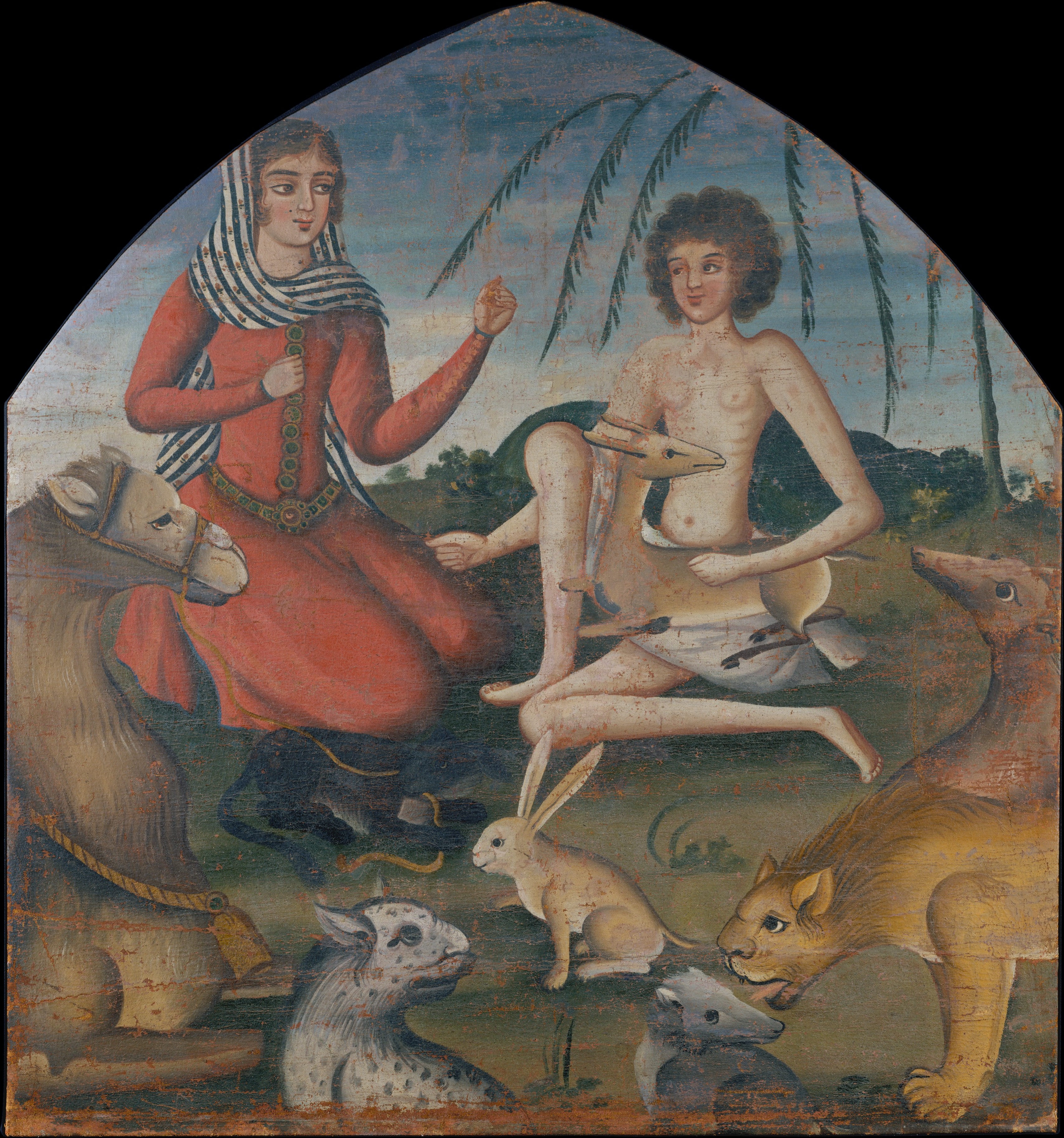You must join the virtual exhibition queue when you arrive. If capacity has been reached for the day, the queue will close early.
Learn more
Jump to content tickets Member | Make a donation
- The Collection
- The American Wing Ancient Near Eastern Art Arms and Armor The Michael C. Rockefeller Wing Asian Art The Cloisters The Costume Institute Drawings and Prints Egyptian Art European Paintings European Sculpture and Decorative Arts Greek and Roman Art Islamic Art Robert Lehman Collection The Libraries Medieval Art Musical Instruments Photographs Antonio Ratti Textile Center Modern and Contemporary Art
Crop your artwork:
Scan your QR code:
Gratefully built with ACNLPatternTool
Not on view
The top of the painting is shaped to fit into a niche in a wall; it was part of a series of eight works made to decorate a room, all with the subject of love stories from famous Iranian poets. Seven of the eight paintings are currently in the collection of the Brooklyn Museum.
This painting depicting the classic story of Laila and Majnun would therefore originally have been accompanied by images of Bahram Gur and Azada Hunting, Khusrau Discovering Shirin Bathing, and other well-known tales of Persian lore, as well as hunting scenes. Following the established imagery of Laila and Majnun, Majnun is shown here as a skeletal youth, who has retreated to the wilderness, where he lives surrounded by animals after his proposal of marriage is rejected by Laila’s father.
The technique of oil painting on canvas, which was introduced into Iran in the late seventeenth century, was further developed and refined in the eighteenth century and became a major medium of expression in the nineteenth century. In this painting, Laila appears in clothing typical dress of the Zand period (1750–79).
Open Access
As part of the Met's Open Access policy, you can freely copy, modify and distribute this image, even for commercial purposes.
API
Public domain data for this object can also be accessed using the Met's Open Access API.
- Download image


This artwork is meant to be viewed from right to left. Scroll left to view more.
Artwork Details
Use your arrow keys to navigate the tabs below, and your tab key to choose an item
Title: Laila and Majnun
Date: mid-18th century
Geography: Attributed to Iran, Shiraz
Medium: Oil on canvas
Dimensions: H. 36 3/8 in. (92.4 cm)
W. 33 7/8 in. (86 cm)
D. 3/4 in. (1.9 cm)
Classification: Paintings
Credit Line: Bequest of Charles K. Wilkinson, 1986
Accession Number: 1987.355.1
Learn more about this artwork
Timeline of Art History
Chronology
Iran, 1600-1800 A.D.
Related Artworks
- All Related Artworks
- Islamic Art
- Canvas
- Oil
- Paintings
- From Asia
- From Iran
- From Shiraz
- From A.D. 1600–1800
Two Panels with Flower Designs
ca. 1650
Portrait of a Lady
mid-17th century
Book Cover with Tree, Birds, and Insects
ca. 1700
Album Page with Decoupe Vase of Flowers, Insects, and Birds
Muhammad Hasan
1630–40
Album Page with Découpé Calligraphy
1630–40
Resources for Research
The Met's Libraries and Research Centers provide unparalleled resources for research and welcome an international community of students and scholars.
The Met Collection API is where all makers, creators, researchers, and dreamers can connect to the most up-to-date data and public domain images for The Met collection. Open Access data and public domain images are available for unrestricted commercial and noncommercial use without permission or fee.
Feedback
We continue to research and examine historical and cultural context for objects in The Met collection. If you have comments or questions about this object record, please complete and submit this form. The Museum looks forward to receiving your comments.
Islamic Art at The Met
The Met's collection of Islamic art is one of the most comprehensive in the world and ranges in date from the seventh to the twenty-first century. Its more than 15,000 objects reflect the great diversity and range of the cultural traditions from Spain to Indonesia.

